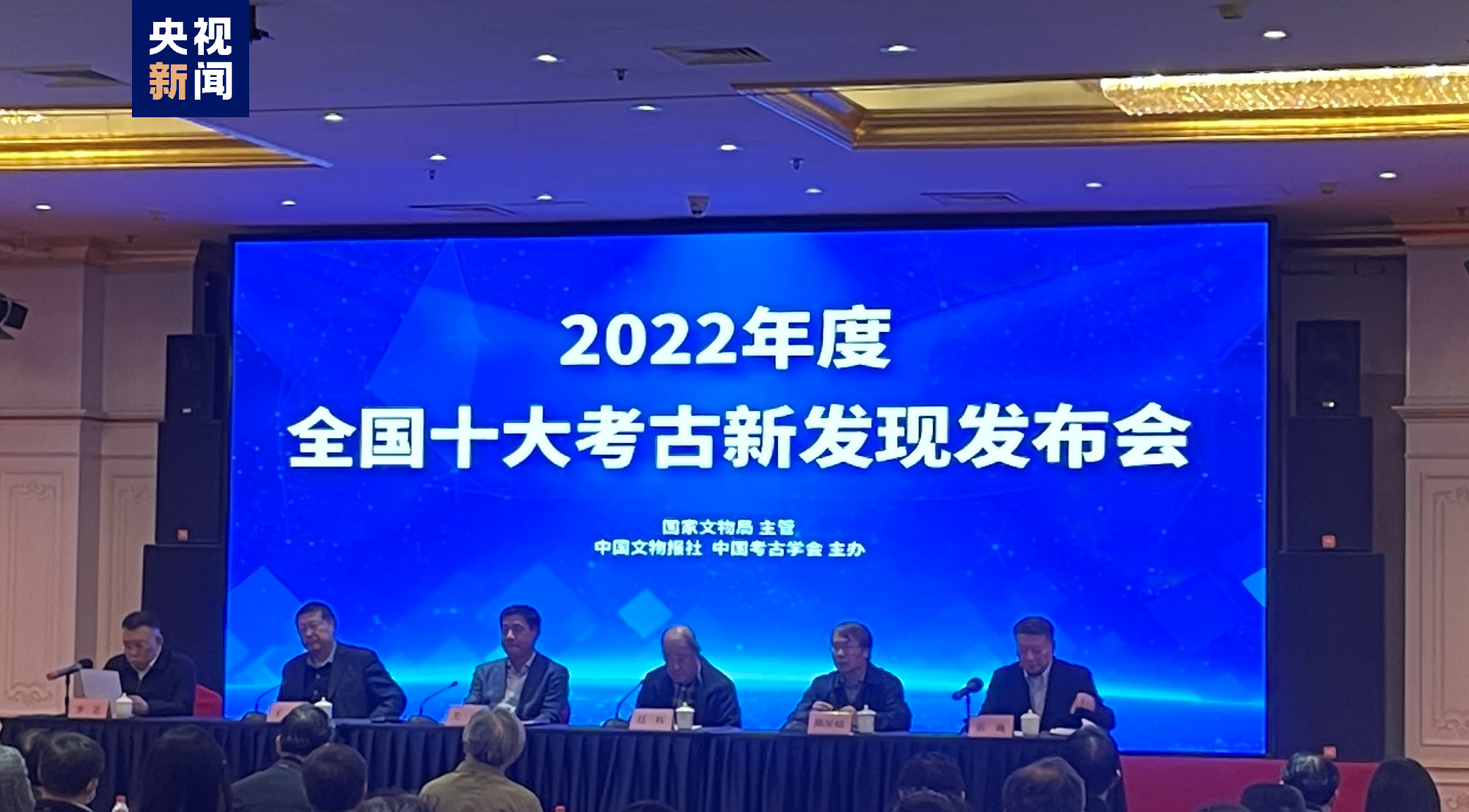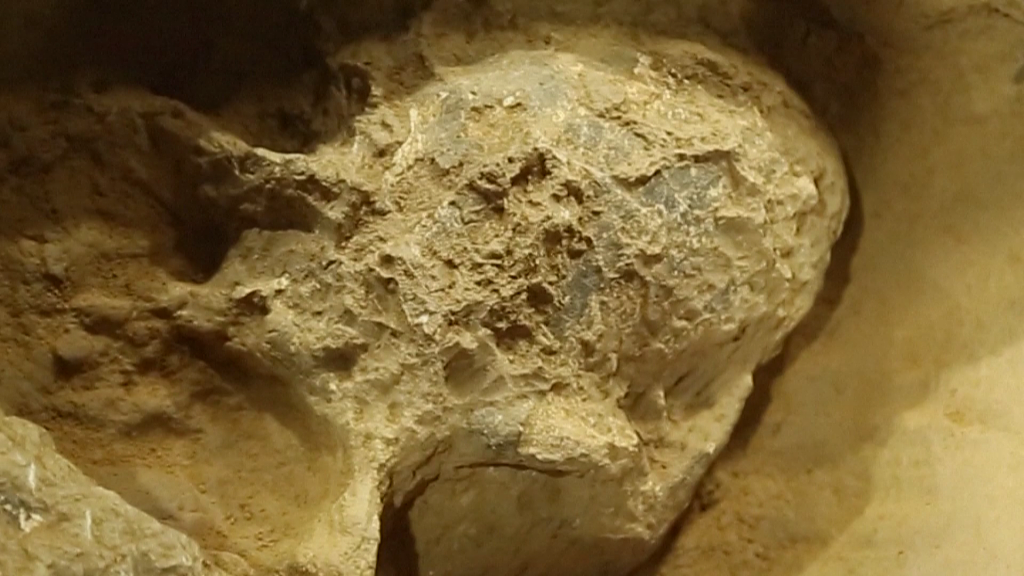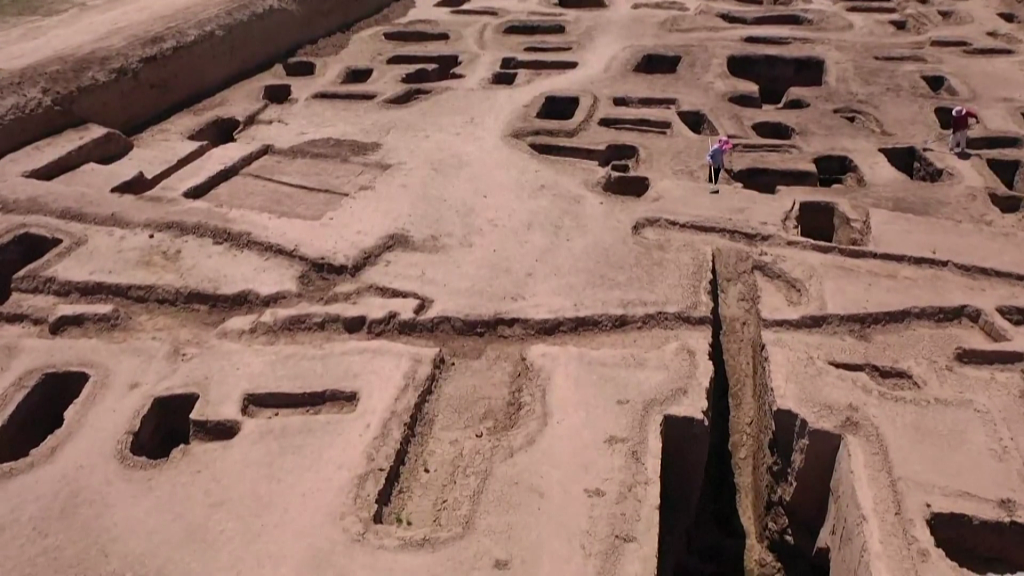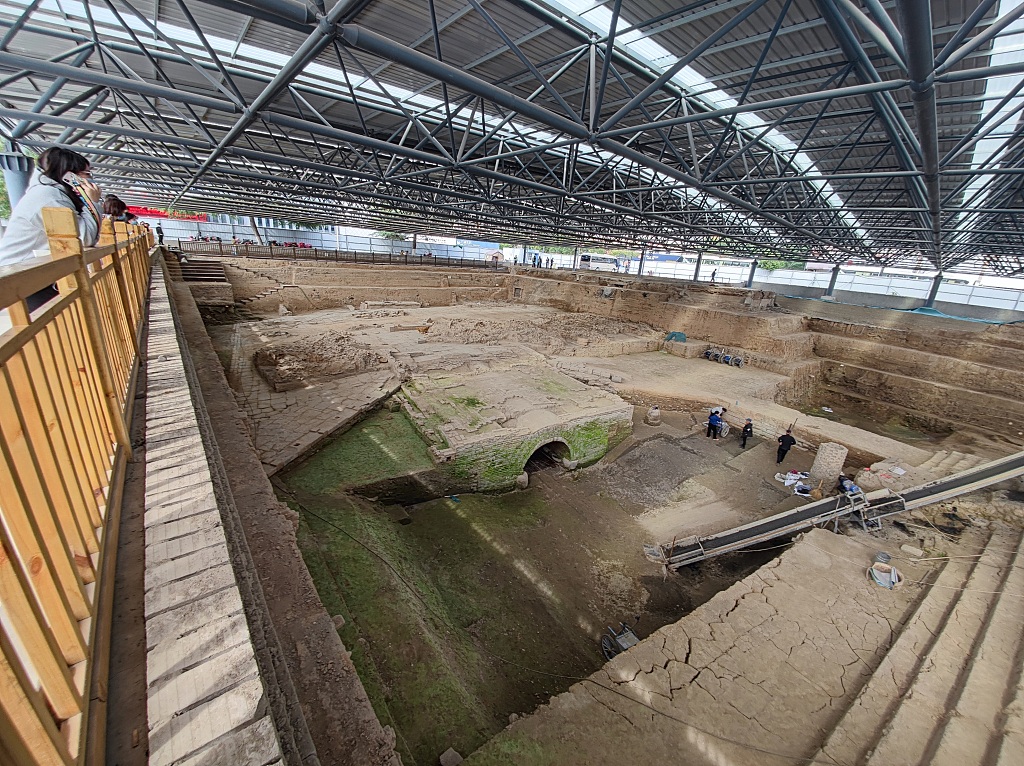China revealed its top 10 archaeological discoveries of 2022 on Tuesday, March 28 in Beijing. They were chosen by a panel of scholars and archaeologists from a shortlist of 22 recently uncovered sites from all over the country.
Announced once a year by the National Cultural Heritage Administration, the list aims to offer the public a glimpse into China’s rich history and culture by introducing the best and latest archaeological finds.

China reveals its top 10 archaeological discoveries of 2022 on March 28, 2023, in Beijing. /CMG
China reveals its top 10 archaeological discoveries of 2022 on March 28, 2023, in Beijing. /CMG
Xuetangliangzi Site
The Xuetangliangzi Site in Hubei is known for its pair of million-year-old Homo erectus skull fossils. It is an important Paleolithic site yielding ancient human and animal fossils, as well as various stone artifacts.

Homo erectus skull fossils unearthed in the Xuetangliangzi Site in Shiyan, Hubei. /CFP
Homo erectus skull fossils unearthed in the Xuetangliangzi Site in Shiyan, Hubei. /CFP
Zhaojiaxuyao Village Site
Archaeologists conducted extensive uncovering, excavation, and research work at the Zhaojiaxuyao Village Site in Shandong based on a thin layer of red clay buried 4-6 meters below ground level. Archeological evidence indicates the transition from the Old Stone Age to the New Stone Age.
Bicun Relics Site
The Bicun Relics Site is the largest prehistoric stone city discovered on the east bank of the Jinshan Grand Canyon. It provides key materials for interpreting the civilization of the region and serves as an important window displaying the formation of the diverse yet integrated Chinese civilization centered on the central plains area.
Crisscrossing road network of Erlitou Site
The Crisscrossing road network of Erlitou Site in Luoyang, Henan is known for its square city planning system as well as its "residence and burial in one" layout structure. These laid the most important and direct foundation for the Shang (1600-1100 B.C.) and Zhou (1100-256 B.C.) dynasties as well as subsequent civilizations.
Royal Mausoleum Site of Yinxu Ruins
The Royal Mausoleum Site of Yinxu Ruins date back to the Shang Dynasty in Anyang, Henan. They reveal a different layout from other tomb complexes of former Shang kings, helping research into such burial systems and shedding more light on Shang culture and history.
Xunyi Xitou Site
The Xunyi Xitou Site is one of the largest settlements from the time of the Shang and Zhou dynasties discovered to date in the Jing River Basin. It provides valuable materials for the study of settlement layouts, demographics, and social changes during these periods.

The Xunyi Xitou Site contains relics from the Shang and Zhou dynasties. /CFP
The Xunyi Xitou Site contains relics from the Shang and Zhou dynasties. /CFP
Dasongshan Tomb Site
The Dasongshan Tomb Site in Guizhou has a total of 2,192 excavated tombs. It witnessed the gradual geographical shift of the social and cultural center of the Han (202 B.C.-220 A.D.), Jin (265-402 A.D.), and Ming (1368-1644 A.D.) dynasties to the surrounding areas of the provincial capital of Guiyang, as well as the drastic changes in the social and economic conditions of Guizhou before and after its establishment as a province during the Ming Dynasty.
Gucheng Temple Site
The Gucheng Temple Site in Jilin shows how Buddhist culture was introduced and developed in frontier areas during the Southern and Northern dynasties (386-589 A.D.) as well as the Sui (581-618 A.D.) and Tang (618-907 A.D.) dynasties. It is a valuable resource in terms of proving the formation of China as a multi-ethnic unified country, as well as in strengthening the sense of national community.
Zhouqiao Bridge Site and Bianhe Canal Ruins
More than 60,000 of various types of artifacts have been unearthed from the Zhouqiao Bridge Site and Bianhe Canal Ruins in Kaifeng, Henan, which offers significant value for those studying the urban layout and structure of the Northern Song Dynasty's (960-1127 A.D.) capital city. The site provides important materials that shine a light on the politics, economy, culture, and etiquette of the country during the Northern Song period.

The Zhouqiao Bridge Site and Bianhe Canal Ruins in Kaifeng, Henan. /CFP
The Zhouqiao Bridge Site and Bianhe Canal Ruins in Kaifeng, Henan. /CFP
Shuomen Ancient Port Ruins Site
The Wenzhou Shuomen Ancient Port Ruins Site in Zhejiang shows the prosperity of Wenzhou port during the Song (1279-1368 A.D.) and Yuan (1279-1368 A.D.) dynasties, marking a significant achievement in the field of urban and port archaeology in China. The site provides key physical evidence for Wenzhou's role as the starting point for the export of celadon and as a crucial node city along the Maritime Silk Road.